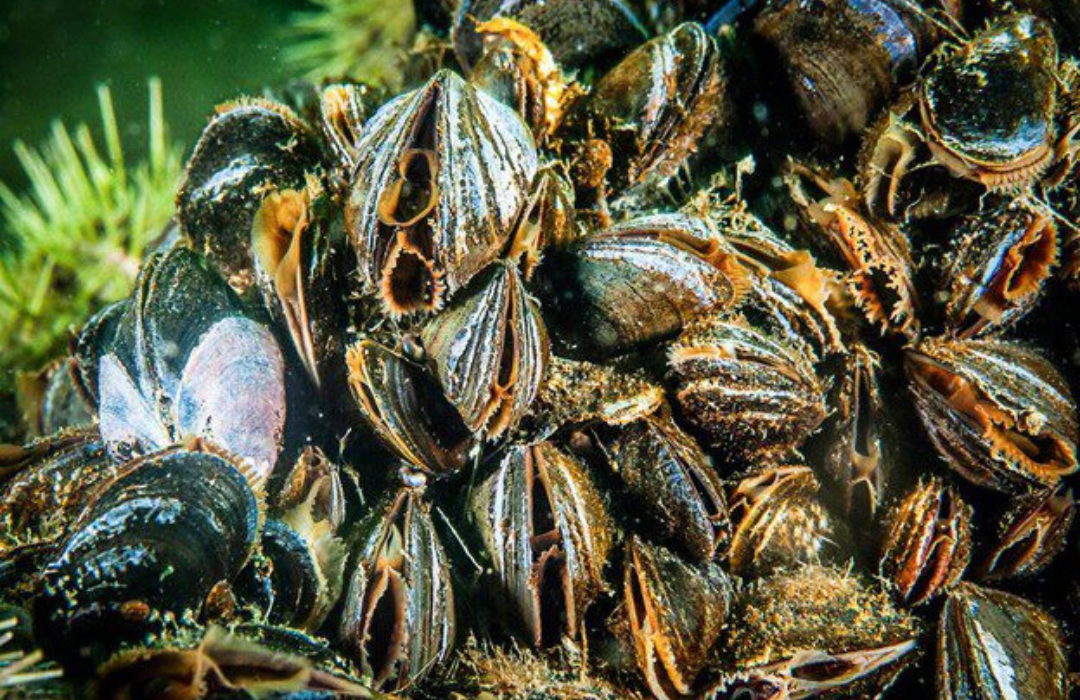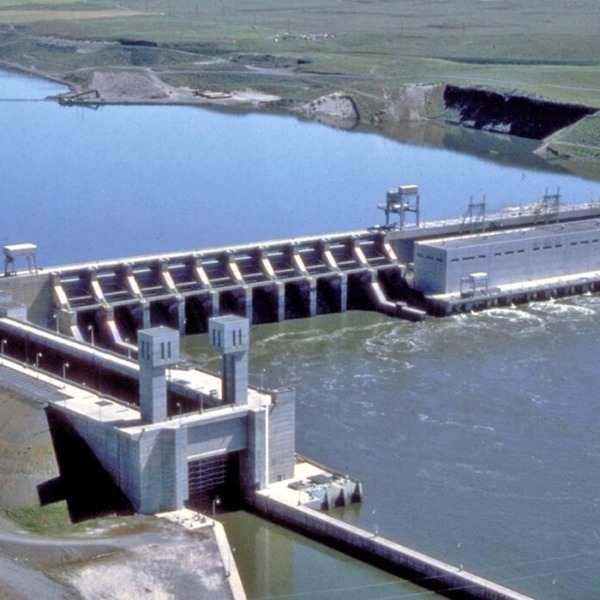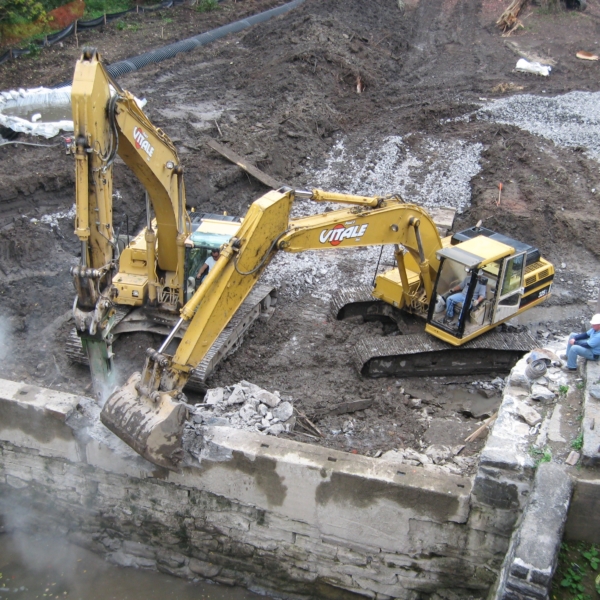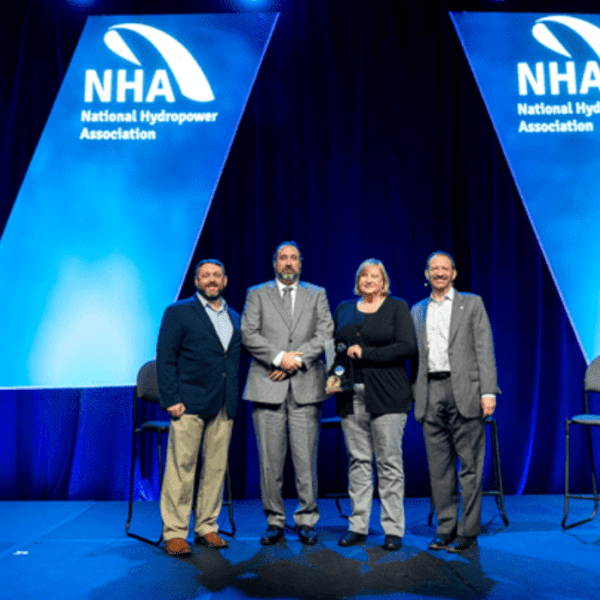Guest Content
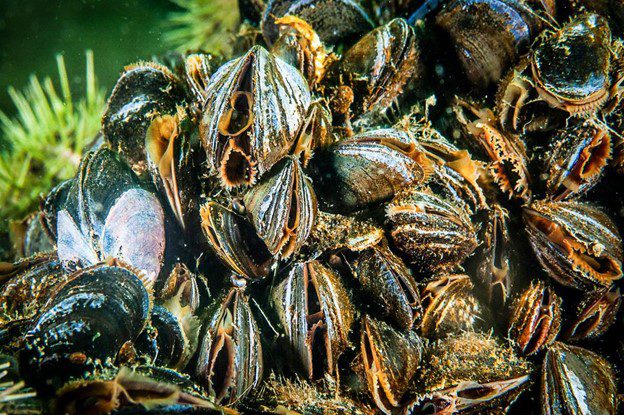
Above: Freshwater mussels are the Britta filters of our rivers. Image: Shutterstock.
When we turn on the tap at our offices in Alameda, California, we fill our glasses with clean water from the Mokulemne watershed, which originates 175 miles away in tributaries that are home to freshwater mussels.
For the majority of people in the United States, turning on the tap and filling a glass of water is an unremarkable daily action. Until access to clean water is threatened, it is easy to forget that meeting this basic human need relies on the seamless function of multiple complex systems. These systems include human-made infrastructure for storage, transport and treatment, as well as natural systems such as the one underwritten by the extraordinary relationship between fish and freshwater mussels.
Hydropower intersects with both the human-made and natural systems responsible for maintaining clean water supply. On the built infrastructure side, we can celebrate the incredible security and flexibility that hydro plant reservoirs provide by collecting and storing water and by generating the power needed to transport that water to where it is needed for consumption and irrigation. On the other hand, dams that fragment rivers can impact the survival of fish and other aquatic organisms, like freshwater mussels, that serve vital roles in maintaining clean water.
With an average age of 64 years, and nearly half of nonfederal plants up for relicensing by 2035, the U.S. hydro fleet is on the cusp of a major transformation. As owners and operators seek to modernize their plants, it is essential that both upstream and downstream fish passage are prioritized alongside safety and performance — our clean water depends on it.
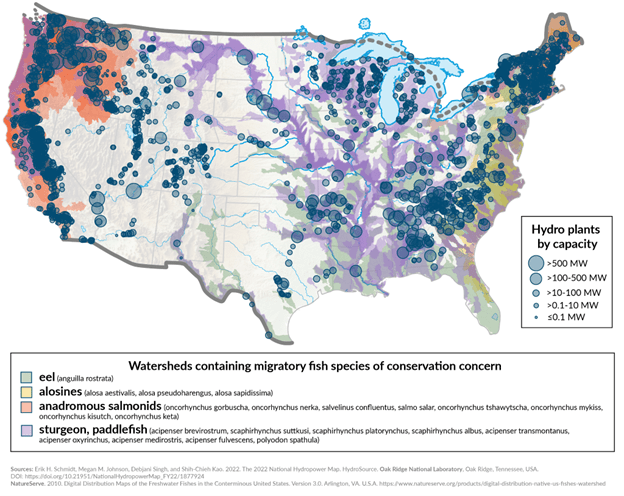
Above: Data from Oak Ridge National Laboratory and NatureServe is combined to illustrate the overlap of fish species of conservation concern with the country’s hydro plants. As nearly half of these plants undergo relicensing, there is an opportunity to employ new technologies and practices to support fish populations. Image: Natel Energy
FILTERING TAKES MUSSEL
Understanding how freshwater mussels support water quality is key to appreciating why we need to construct hydropower sites to give aquatic organisms the best possible chance of survival. Worldwide there are about 900 species of freshwater mussels, about 300 of which are found in North America. Of these, more than 70% are endangered, threatened or vulnerable.
In the same way that pollinators support terrestrial ecosystems, mussels provide essential ecosystem services for rivers and lakes including water filtration, habitat stabilization, and nutrient cycling. A single mussel can filter up to 15 gallons of water a day, reducing concentrations of algae, bacteria, diseases, heavy metals, and pharmaceuticals, as well as industrial runoff. The timelapse video below illuminates just how effective mussels are at filtering the water around them.
Mussels at Work: A Time Lapse Demonstration
BIVALVES AS BACKPACKERS
Mussels’ relationship to hydropower is intertwined with fish. Mussel larvae attach to the gills of a host fish where they can filter nutrients and complete their development before dropping to the river or lake bed in a new location. At first glance, freshwater mussels lack the charisma of aquatic megafauna like salmon and eels, but, in fact, they boast showy behavior of their own, creating specialized lures to attract just the right host.
Not only do different species of mussels prefer specific species of fish, one study of freshwater pearl mussels and Atlantic salmon found that the mussels attached most effectively to the salmon population of their home river. Because they are dependent on specific fish species for their larval life stage, the ability of the host fish to safely navigate a hydropower plant may have a direct effect on the potential for mussels to exit the larval stage and land in a suitable habitat to grow to maturity.
PRIORITIZING PASSAGE
Another type of migratory fish that serves as a host for some freshwater mussel species is the eel. American eels, like European and Japanese eels, follow the opposite path of salmon, spawning in the ocean and then migrating upstream as juveniles (elvers) where they grow to adulthood in freshwater rivers and lakes before migrating back downstream to the ocean to reproduce.
An example of the complicated interplay of eels, mussels, and hydropower has been documented on the Susquehanna River in Maryland and Pennsylvania where hydroelectric projects prevented American eel elvers from migrating upstream and created hazardous conditions for downstream migration, causing the near disappearance of eels from the Susquehanna.
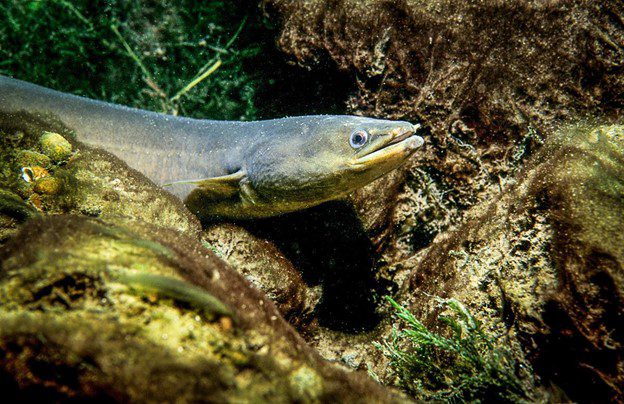
Above: American eel are a host species for the Eastern Ellptio mussel. Image: Shutterstock.
Without the eels to transport larvae to upstream habitats, Eastern Elliptio mussels in the Susquehanna River declined to near extinction until the hydro projects on the Susquehanna implemented measures to improve eel passage, including transporting eel upstream. As the efforts to transport eel above the hydro plants have been successful, researchers have also seen an increase in the presence of Eastern Elliptio mussels and an improvement in water quality in the Susquehanna River.
Improvements in downstream fish passage could help sustain and amplify the continued recovery of eels and mussels, improving water quality throughout the Susquehanna watershed to the Chesapeake Bay.
HYDRO AS PART OF THE SOLUTION
Freshwater mussels are an “indicator species” because they can be used to measure the well-being of the ecosystem they are a part of. Declining mussel populations are a call to action that the hydropower industry is well equipped to answer.
When we design, construct, operate, and retrofit hydropower projects, we can make choices to employ technologies and practices that conserve or improve aquatic habitat, and, in turn, keep our water clean. We can look to scientists, resource agency experts, anglers, indigenous peoples, stewardship groups, and our industry colleagues for examples of what has worked to support fish and mussel populations, and we can adopt best practices. We can also engage in additional research, dialogue, and testing to move the ball forward for passage of aquatic organisms through our hydropower projects.
The water power industry has a long history of creatively engineering solutions to complex problems, and as a result we not only rely on hydro to balance our electric grid, but also to support a water system that stores and delivers clean water throughout the country. Now, as an industry, we can put that ingenuity and drive towards innovations and actions that will preserve freshwater ecosystems — and the clean water they provide — for generations to come.



